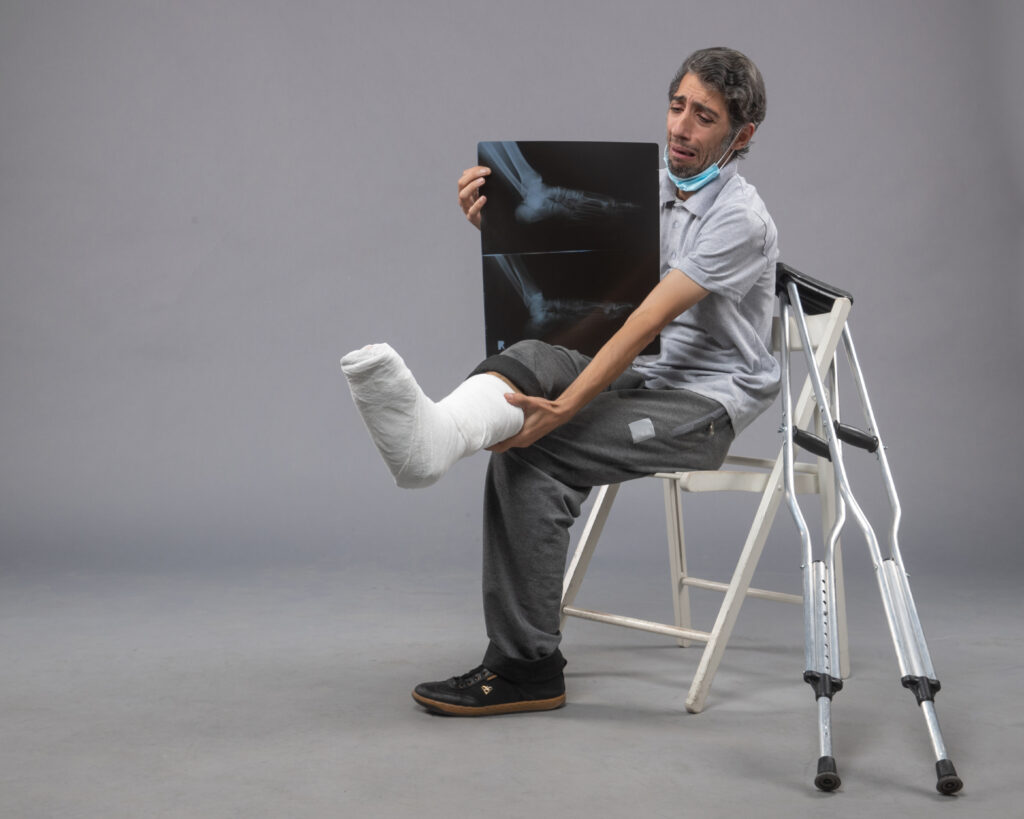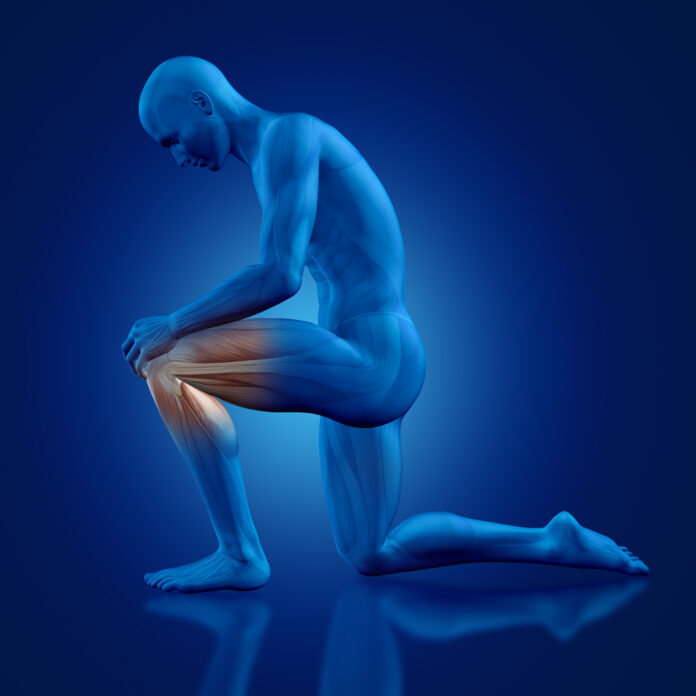Degenerative joint disease, Osteoarthritis, is a common prevailing disease in the country. The Centers for Disease Control has claimed that osteoarthritis affects more than 30 million people in the country every year. The degenerative joint disorder occurs when your joint cartilage gets worn down. This disease is more common in older people because, with progressing age, the cartilages in the joints get weakened. Dysfunctionality and degeneration of cartilage can be well explained through a car analogy. Long-time use of car tires wears them out and similar is the case with the cartilage located at the ends of your bones.
A group of expert orthopedics claim that joint pain and stiffness in joints are the major symptoms of osteoarthritis. These symptoms can be well managed by using proper medications, which bring positive changes in lifestyle and surgery. These treatment methodologies can help relieve pain and inflammation.
What is Osteoarthritis?
It is a degenerative joint condition that causes pain, stiffness, and inflammation in joints. It is the most prevailing and common type of arthritis as it affects more than 25% of the population in the country. If left untreated for a longer duration, it causes a reduction in mobility and impacts your quality of life badly. Treatments are necessary to help slow the progression of the disease.
In this article, symptoms, types, causes, treatments, and everything you need to know about osteoarthritis have been discussed. So keep reading!
Risk Factors
The National Institute of Skin and Arthritis has declared that the underlying causes of osteoarthritis are still not known. However, the risk factors linked with osteoarthritis have been identified to a large extent. These risk factors contribute to the progression of the disease. These risk factors include:
- Being aged over 60 years.
- Being overweight.
- Having a menopausal stage.
- Having a family member with condition.
- Past injuries like a ligament injury or a dislocated joint.
- Being assigned female at birth.
- Doing a job involving heavy lifting, climbing, or kneeling.
- Having another type of joint disorder.
- Many risk factors are here that cause osteoarthritis.
Let’s have a look! Age: This is the major risk factor and the most common age group attacked by osteoarthritis is 55 to 65 years old but studies show that many cases are dealt with where people in their 40s of their age indulge in this trouble of degenerative joints.
Age: This is the major risk factor and the most common age group attacked by osteoarthritis is 55 to 65 years old but studies show that many cases are dealt with where people in their 40s of their age indulge in this trouble of degenerative joints.
Genetic Linking: Genetic predisposition is another factor for causing osteoarthritis if your family members have it. However, the mechanism of genetic disposition is still unknown.
Obesity: This is also a major risk factor for osteoarthritis. The heavy weight of the body puts excessive pressure on your joints and causes cartilage to wear down.
Gender: Degenerative joint disease is more common in women than men but the reason is not well known.
Over-training: Sometimes, you overuse your joints engaging them in high-impact activities on the job or during playing a sport or performing a strenuous workout.
First Medical Help to Prevent Osteoarthritis: Exercising regularly and maintaining an ideal weight can help preserve your joints but nothing is guaranteed.
Symptoms of Osteoarthritis
Osteoarthritis shows its symptoms according to the severity of the disease and the affected part of the body. Generally, osteoarthritis shows the symptoms, including:
- Joint inflammation.
- Joint pain.
- Flexibility reduction in bones and joints.
- Reduced mobility.
- Bone spurs.
- Popping, clicking, or crackling sounds in joints when moving.
- Feel discomfort when pressing on the affected areas with your fingers.
- Extra lumping of bones.
With the progression of osteoarthritis, the pain associated with it becomes more intense. With the passage of time, swelling in the joints and surrounding areas also occurs.
Causes of Osteoarthritis
Gradual cartilage and joint damage occur when you suffer from osteoarthritis. Cartilage is a tough substance with a rubbery texture that not only protects the end of the bones but also allows them to move easily against each other. Osteoarthritis causes a breakdown in these cartilages leading to bones rubbing against each other. This can cause severe pain, inflammation, and other symptoms of osteoarthritis.
Types of Osteoarthritis
Degenerative joint disorder affects different parts of your body but the most common targets of the condition are your hips and knees. Although it can affect any part of the body, the joints located in your knees and hip bones are frequently affected by this condition.  It also has more types, such as:
It also has more types, such as:
- Spinal osteoarthritis.
- Shoulder arthritis.
- Fingers osteoarthritis.
- Hands osteoarthritis.
- Cervical osteoarthritis.
Symptoms of osteoarthritis spread to other parts of your body with a high frequency. Thus it is a progressive condition. When one part of your body gets affected by osteoarthritis, it surely increases the risk of developing the condition in other parts of your body. The Arthritis Foundation in the USA claims that osteoarthritis is not a limited condition. It has a greater tendency to damage the other parts of your body in a short time. Therefore, immediate preventive measures are necessary.
Osteoarthritis Stages
As this is a progressive condition, this can be easily classified into four stages. The severity of your symptoms and the degree of affected joint and damaged cartilage are the factors that decide at which stage of osteoarthritis you fall.
The four stages of osteoarthritis are:
Mild Stage: This is the early stage of osteoarthritis and is characterized by mild pain where your cartilage is still in good shape. This is stage 1.
Moderate Stage: This is the second level of the condition. This stage is characterized by acute and sharp symptoms. Here your joints start to wear and tear in themselves. Advanced Stage: The third stage of osteoarthritis is labeled with constant symptoms, such as pain and inflammation in joints whenever you apply weight to the affected joint. At this stage, your joint cartilage is almost completely gone.
Advanced Stage: The third stage of osteoarthritis is labeled with constant symptoms, such as pain and inflammation in joints whenever you apply weight to the affected joint. At this stage, your joint cartilage is almost completely gone.
Severe Stage: At this last stage you may experience severe symptoms of osteoarthritis, including:
- Decreased range of motion.
- Stiffness, inflammation, and severe pain affected joints.
- Joint instability, like sudden buckling or locking in joints.
- Muscle weakness.
- Joint deformity and bone spurs.
Stage 4 is actually a sign that you need prompt surgery to reduce your symptoms and increase mobility to enhance the function of your joints to upgrade the quality of your life.
Diagnosis and Identification
A degenerative condition that develops gradually is known as osteoarthritis. Even in the era of high-level medical research, it may be still hard to provide an accurate diagnosis in the early stages of osteoarthritis.
Your healthcare provider may start with your physical examination and ask you about your medical history and recent symptoms. In the second step, they will order you to bring imaging test reports to get a better look at your joints, such as MRI or X-ray.
In severe cases, doctors usually order an ESR blood test or a synovial fluid analysis to observe if other conditions may be causing inflammation or joint pain. Some conditions they will rule out include:
- Gout.
- Rheumatoid Arthritis.
- Bursitis.
- Hemochromatosis.
- Pseudogout.
- Psoriatic Arthritis.
Treatment Options
Although an accurate cure for osteoarthritis has not been found. However, treatment strategies will aim to help you in:
- Relieving symptoms.
- Increasing life quality.
- Reducing inflammation.
- Increasing joint mobility, function, and flexibility.
Your healthcare professional may help you develop the best treatment plan. The treatment plans vary from person to person depending on several factors, including the part of the body affected by the condition and severity of symptoms. But the surgery in this case is the ultimate way of treatment.
Osteoarthritis Surgery
When other treatment plans fail to reduce joint pain or control other symptoms, or when the inflammation or pain prevents you from participating in your normal activities, you may go for osteoarthritis surgery.
Several types of surgery are done for treating osteoarthritis, including:
Arthroscopy: Cleaning out of damaged cartilage or repairing tissues is called arthroscopy. This surgery procedure is considered best for the treatment of shoulder and knee joints. But its effectiveness is still questioned and more evidence is required to prove its accurate effectiveness.
Joint Replacement: In this type of surgery, the damaged joint is replaced with an artificial one. Joint replacement surgery is considered best when the severity of joint pain interferes with your daily life activities and disturbs your quality of life. However, the effectiveness is not assured as even under the best circumstances, surgery cannot return the joint to its original functional state because artificial joints do not perform all functions and motion of a normal joint. Surgery can improve the function and movement of affected joints. Artificial joints can also lessen your pain. Hip and knee joints are usually replaced through surgery. Recent medical developments have made advancements in the field of osteoarthritis surgery. You can replace your shoulders, fingers, elbows, and ankles to treat severe pain, in case of failure of other treatment options.
Joint Fusion: There are some areas in your body where joint replacement is not effective. Therefore, a joint fusion procedure is applied to remove damaged joints and then fuse the two bones on each side of the joint.
Before applying any of these treatment plans, talk to your doctor if any of these options is right for you.
Other treatment plans for osteoarthritis symptoms typically include a combination of treatments, including:
- Dietary changes, such as eating anti-inflammatory foods.
- Lifestyle Changes, such as weight management, good sleep, and exercise.
- Over-the-counter medicines, such as non-steroidal anti-inflammatory medications.
- Prescription medications, such as corticosteroids.
- Natural remedies, such as cold and heat therapies, supplements for relieving pain, and yoga.
- Physical therapy.
- Assistive devices, such as knee braces.
Complications related to Osteoarthritis
A variety of mental, emotional, and physical complications appear due to osteoarthritis, if left untreated for a longer time. The most common complication of the condition is the increase in joint stiffness which may lead to impaired mobility and balance.  According to the treatment foundation for Osteoarthritis, this situation can increase the risk of falling which ultimately leads to severe or minor injuries.
According to the treatment foundation for Osteoarthritis, this situation can increase the risk of falling which ultimately leads to severe or minor injuries.
More possible complications of osteoarthritis include:
- Bleeding near joints, known as hemarthrosis.
- Hairline stress.
- Erosion of tendons and ligaments.
- Depression.
- Anxiety.
- Bone death, medically known as osteonecrosis.
- Poor sleep.
- Weight gain due to limited mobility.
Preventive Measures
Some risk factors cannot be changed even with effective efforts, such as age and heredity. However, some modifiable risk factors can be prevented by following the tips below:
- Wear proper footwear.
- Use assistive devices, such as canes.
- Eat an anti-inflammatory and balanced diet.
- Maintain your weight.
- Take regular light exercise for 160 minutes a week.
- Manage your blood pressure, if you have a hypertension issue.
Rheumatoid Arthritis vs. Osteoarthritis
Both share many similar symptoms but they are two different conditions.
As you learn in this article, osteoarthritis is a degenerative condition, which increases in severity over time.
Rheumatoid Arthritis also causes progressive joint damage if left untreated but this is an autoimmune disorder. In this condition, your immune system mistakenly attacks your soft and healthy lining around the joints. With the auscultation of the immune system, fluid buildup occurs in the joints. This leads to inflammation, swelling, stiffness, and pain in the joints.
If you are not sure about the type of arthritis you should, speak with a doctor. They can diagnose properly through different tests and develop the best treatment plan for your disease.
Conclusion
Osteoarthritis is the most common form of arthritis and is caused by wear and tear on your joints. It can affect your shoulders, wrists, hands, spine, knees and hips. You are more likely to develop this condition if you are overweight, have certain underlying health issues, put a lot of strain on your joints, or have a family history of it. Although no proper cure is known for osteoarthritis, a variety of treatment plans can ease your symptoms. These strategies include lifestyle changes, medications, and surgical options. Osteoarthritis is a chronic disorder that causes stiffness, pain, and inflammation in your joints.
Moreover, the best treatment plan may ease you in managing your symptoms, improving your quality of life, and increasing your mobility. Speaking with a certified healthcare professional could help you diagnose and develop an effective treatment plan that’s right for you.







